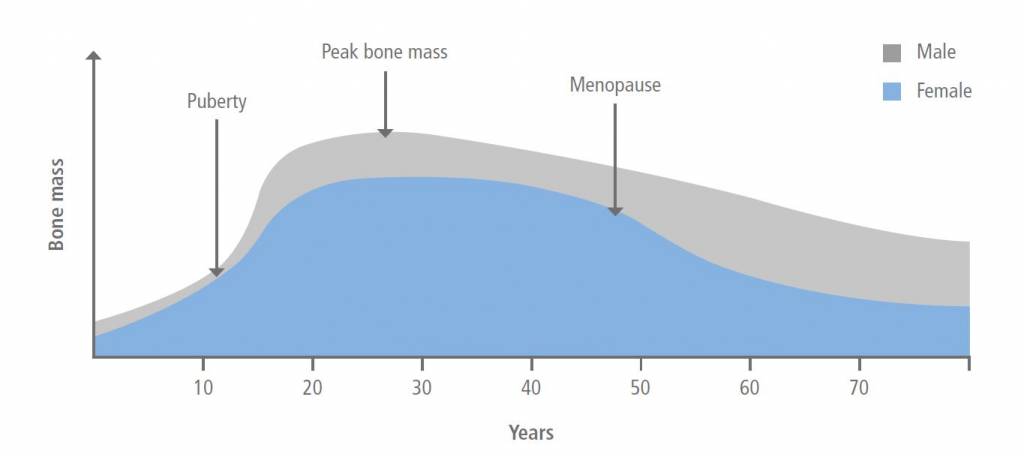 ‘Osteoporosis’ is normally only considered to affect those over the age of 60. However, what you do in your 20’s and 30’s can have a large impact on the health of your bones later in life. Increasing your “bone bank” early in life may help prevent osteoporosis. Peak bone mass is normally achieved around age 30yrs. A 10% increase of peak bone mass can delay the onset of osteoporosis by 13 years!
‘Osteoporosis’ is normally only considered to affect those over the age of 60. However, what you do in your 20’s and 30’s can have a large impact on the health of your bones later in life. Increasing your “bone bank” early in life may help prevent osteoporosis. Peak bone mass is normally achieved around age 30yrs. A 10% increase of peak bone mass can delay the onset of osteoporosis by 13 years!
Exercise and physical activity are an important factor in keeping our bones healthy. As we move, mechanical loads applied to our skeleton increase the stress on our bones causing our bones to adapt and become stronger. Studies examining the impact of exercise on bone health have shown that bone density increases as small as 5%, improve bone strength by over 60% and prolong bone failure (the point when the bone fractures) by 100-fold! Regular weight bearing exercise contributes to increasing peak bone mass and also helps to decrease the amount of bone lost caused naturally with aging.
Making sure we have adequate nutrition in our younger years (namely 20-30yrs) goes a long way to making sure we keep our bones in top notch health. Important nutrients for bone health include calcium (found in dairy products, dark green leafy vegetables and some nuts), vitamin D (found in fish, eggs but mostly the sun!), vitamin K (found in green leafy vegetables and herbs) manganese (whole grains, black and green teas and leafy vegetables) and boron (found in some fruits & nuts). These can be checked every few years through a simple blood test with your GP.
Most people aren’t aware that excessive alcohol intake is also linked to a decrease in bone health and an increase risk of fracture. Alcohol can interfere with the balance of calcium in the body, hormones (which protect bone) and vitamins (needed to absorb calcium). Additionally, smoking has also been linked with a decreased bone density and a poorer ability for bones to heal after fracture. These are both lifestyle aspects that should be considered, particularly in the 20-30 years age bracket, where most irreversible damage is done.

Osteoporosis is known as a ‘silent’ disease as it has no symptoms and bone loss can occur for many years before resulting fracture. Bone density scans are only able to be completed with a GP referral. Some items numbers enable the scan to be bulk-billed otherwise the cost is $90. The scan scans are completed on the lumbar spine and femoral neck in under a minute each. Little time spent for peace of mind.
PIP TOCKUSS
B.CLINEXERPHYS, AES, ESSAM
Accredited Exercise Physiologist
References:
Ann. N.Y. Acad. Sci. 1068: 429–446 (2006). 2006 New York Academy of Sciences. doi: 10.1196/annals.1346.039
Hernandez, C. J., Beaupr, G. S., & Carter, D. R. (2003). A theoretical analysis of the relative influences of peak BMD, age-related bone loss and menopause on the development of osteoporosis. Osteoporosis International, 14(10), 843-847. doi:10.1007/s00198-003-1454-8
[btnsx id=”4530″]

